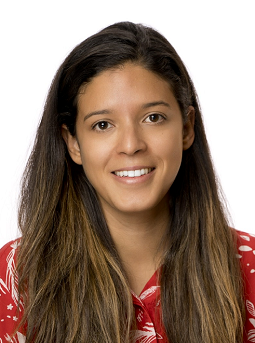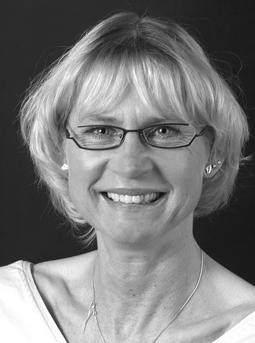Dunås T, Wåhlin A, Nyberg L, Boraxbekk C-J. 2021. Multimodal Image Analysis of Apparent Brain Age Identifies Physical Fitness as Predictor of Brain Maintenance. Cerebral Cortex. 31(7):3393-3407. https://doi.org/10.1093/cercor/bhab019
Hansen AL, Boraxbekk C-J, Petersen ET, Paulson OB, Andersen O, Siebner HR, Marsman A. 2021. Do glia provide the link between low-grade systemic inflammation and normal cognitive ageing? A 1H magnetic resonance spectroscopy study at 7 tesla. Journal of Neurochemistry. 159(1):185-196.
Nyberg L, Magnussen F, Lundquist A, Baaré W, Bartrés-Faz D, Bertram L, Boraxbekk CJ, Brandmaier AM, Drevon CA, Ebmeier K, Ghisletta P, Henson RN, Junqué C, Kievit R, Kleemeyer M, Knights E, Kühn S, Lindenberger U, Penninx BWJH, Pudas S, Sørensen Ø, Vaqué-Alcázar L, Walhovd KB, Fjell AM. 2021. Educational attainment does not influence brain aging. Proceedings of the National Academy of Sciences of the United States of America. 118(18):1-3. https://doi.org/10.1073/pnas.2101644118
Sandberg P, Boraxbekk C-J, Zogaj I, Nyberg L. 2021. Ancient Mnemonic in New Format-Episodic Memory Training With the Method of Loci in a Smart Phone Application. Journals of Gerontology - Series B Psychological Sciences and Social Sciences. 76(4):681-691. https://doi.org/10.1093/geronb/gbaa216
Vidal-Pineiro D, Wang Y, Krogsrud SK, Amlien IK, Baaré WF, Bartres-Faz D, Bertram L, Brandmaier AM, Drevon CA, Düzel S, Ebmeier K, Henson RN, Junqué C, Kievit RA, Kühn S, Leonardsen E, Lindenberger U, Madsen KS, Magnussen F, Mowinckel AM, Nyberg L, Roe JM, Segura B, Smith SM, Sørensen Ø, Suri S, Westerhausen R, Zalesky A, Zsoldos E, Walhovd KB, Fjell A. 2021. Individual variations in 'brain age' relate to early-life factors more than to longitudinal brain change. eLife. 10:1-19. https://doi.org/10.7554/eLife.69995
Lind, A., Boraxbekk, C.J., Petersen, E.T., Paulsson, O., Siebner, H., & Marsman, A. (2020). Regional myo-inositol, creatine and choline levels are higher at older age and scale negatively with visuo-spatial working memory: A cross-sectional proton MR spectroscopy study at 7 tesla on normal cognitive ageing. Journal of Neuroscience, 40(42), 8149-8159.
Nyberg, L., Boraxbekk, C.J., Eriksson Sörman, D., Hansson, P., Herlitz, A., Kauppi, K., Ljungberg, J.K., Lövheim, H., Lundquist, A., Nordin Adolfsson, A., Oudin, A., Pudas, S., Rönnlund, M., Stiernstedt, M., Sundström, A., & Adolfsson, R. (2020). Biological and environmental predictors of heterogeneity in neurocognitive ageing: Evidence from Betula and other longitudinal studies. Ageing Research Reviews.
Gylling AT, Bloch-Ibenfeldt M, Eriksen CS, Ziegler AK, Wimmelmann CL, Baekgaard M, Boraxbekk CJ, Siebner HR, Mortensen EL, & Kjaer M. (2020). Maintenance of muscle strength following a one-year resistance training program in older adults. Experimental Gerontology, 139.
Eskilsson, T., Fjellman-Wiklund, A., Ek Malmer, E., Stigsdotter Neely, A., Malmberg Gavelin, H., Slunga Järvholm, L., Boraxbekk, C-J. & Nordin, M.(2020). Hopeful struggling for health: Experiences of participating in computerized cognitive training and aerobic training for persons with stress-related exhaustion disorder. Scandinavian Journal of Psychology.
Friedman, B. B., Suri, S., Solé-Padullés, C., Düzel, S., Drevon, C. A., Baaré, W. F. C., Bartrés-Faz, D., Fjell, A. M., Johansen-Berg, H., Madsen, K. S., Nyberg, L., Penninx, B. W. J. H., Sexton, C., Walhovd, K. B., Zsoldos, E. & Budin-Ljøsne, I. (2020). Are People Ready for Personalized Brain Health? Perspectives of Research Participants in the Lifebrain Consortium. The Gerontologist.
Hansen, A. L., Boraxbekk, C-J., Petersen, E. T., Paulson, O. B., Siebner, H. R. & Marsman, A. (2020). Regional glia-related metabolite levels are higher at older age and scale negatively with visuo-spatial working memory: A cross-sectional proton MR spectroscopy study at 7 tesla on normal cognitive ageing. Cold Spring Harbor Protocols. 36 p., 864496.
Karalija, N., Jonassson, L., Johansson, J., Papenberg, G., Salami, A., Andersson, M., Riklund, K., Nyberg, L. & Boraxbekk, C-J. (2020). High long-term test-retest reliability for extrastriatal 11C-raclopride binding in healthy older adults.
Journal of cerebral blood flow and metabolism.
Wheeler, M. J., Green, D. J., Ellis, K. A., Cerin, E., Heinonen, I., Naylor, L. H., Larsen, R., Wennberg, P., Boraxbekk, C-J., Lewis, J., Eikelis, N., Lautenschlager, N. T., Kingwell, B. A., Lambert, G., Owen, N. & Dunstan, D. W. (2020).
Distinct effects of acute exercise and breaks in sitting on working memory and executive function in older adults: a three-arm, randomised cross-over trial to evaluate the effects of exercise with and without breaks in sitting on cognition.
British Journal of Sports Medicine.
Bangsbo, J., Blackwell, J., Boraxbekk, C-J., Caserotti, P., Dela, F., Evans, A. B., Jespersen, A. P., Gliemann, L., Kramer, A. F., Lundbye-Jensen, J., Mortensen, E. L., Lassen, A. J., Gow, A. J., Harridge, S. D. R., Hellsten, Y., Kjaer, M., Kujala, U. M., Rhodes, R. E., Pike, E. C. J., Skinner, T., Skovgaard, T., Troelsen, J., Tulle, E., Tully, M. A., van Uffelen, J. G. Z. & Viña, J. (2019). Copenhagen Consensus statement 2019: physical activity and ageing. British Journal of Sports Medicine. 53, 14, p. 856-858.
Bojsen-Møller, E., Boraxbekk, C-J., Ekblom, Ö., Blom, V. & Ekblom, M. M. (2019). Relationships between Physical Activity, Sedentary Behaviour and Cognitive Functions in Office Workers.
International Journal of Environmental Research and Public Health. 16, 23, p. 1-15, 4721.
Düzel, E., Acosta-Cabronero, J., Berron, D., Biessels, G. J., Björkman-Burtscher, I., Bottlaender, M., Bowtell, R., Buchem, M. V., Cardenas-Blanco, A., Boumezbeur, F., Chan, D., Clare, S., Costagli, M., de Rochefort, L., Fillmer, A., Gowland, P., Hansson, O., Hendrikse, J., Kraff, O., Ladd, M. E., Ronen, I., Petersen, E., Rowe, J. B., Siebner, H., Stoecker, T., Straub, S., Tosetti, M., Uludag, K., Vignaud, A., Zwanenburg, J. & Speck, O. (2019). European Ultrahigh-Field Imaging Network for Neurodegenerative Diseases (EUFIND). Alzheimer's & dementia (Amsterdam, Netherlands). 11, p. 538-549.
Hedlund, M., Lindelöf, N., Johansson, B., Boraxbekk, C-J. & Rosendahl, E. (2019). Development and Feasibility of a Regulated, Supramaximal High-Intensity Training Program Adapted for Older Individuals. Frontiers in physiology. 10, p. 1-12, 590.
Holm, S. K., Madsen, K. S., Vestergaard, M., Born, A. P., Paulson, O. B., Siebner, H. R., Uldall, P. & Baaré, W. F. C. (2019). Previous glucocorticoid treatment in childhood and adolescence is associated with long-term differences in subcortical grey matter volume and microstructure. NeuroImage. Clinical. 23, p. 1-11, 101825.
Jonasson, L. S., Nyberg, L., Axelsson, J., Kramer, A. F., Riklund, K. & Boraxbekk, C-J. (2019). Higher striatal D2-receptor availability in aerobically fit older adults but non-selective intervention effects after aerobic versus resistance training. NeuroImage. 202, p. 1-10, 116044.
Magnusson, P. O., Boer, V. O., Marsman, A., Paulson, O. B., Hanson, L. G. & Petersen, E. T. (2019). Gamma-aminobutyric acid edited echo-planar spectroscopic imaging (EPSI) with MEGA-sLASER at 7T.
Magnetic Resonance in Medicine. 81, 2, p. 773-780.
Månsson, K. N. T., Lindqvist, D., Yang, L. L., Svanborg, C., Isung, J., Nilsonne, G., Bergman-Nordgren, L., El Alaoui, S., Hedman-Lagerlöf, E., Kraepelien, M., Högström, J., Andersson, G., Boraxbekk, C-J., Fischer, H., Lavebratt, C., Wolkowitz, O. M. & Furmark, T. (2019). Improvement in indices of cellular protection after psychological treatment for social anxiety disorder. Translational psychiatry. 9, p. 1-10, 340.
Marsman, A. & Pol, H. H. (2019). Glutamaterge neurotransmissie. Handboek schizofreniespectrumstoornissen. 2nd udg. De Tijdstroom/Boom, Bind 2019. p. 370-385..
Malmberg Gavelin, H., Eskilsson, T., Boraxbekk, C.J., Josefsson, M., Stigsdotter Neely, A., & Slunga Järvholm L. (2018). Rehabilitation for improved cognition in patients with stress-related exhaustion disorder: RECO – a randomized clinical trial. Stress.
Boraxbekk, C.-J. (2018). Non-invasive brain stimulation and neuro-enhancement in aging. Clinical Neurophysiology, 129, 464-65.
Baruël Johansen, L., Madsen, K. S., Andersen, K. W., Madsen, K. H., Siebner, H. R. & Baaré, W. F. C. (2017) Reduced orbitofrontal functional network centrality characterizes high neuroticism across childhood and adolescence.
Stomby, A., Otten, J., Ryberg, M., Nyberg, L., Olsson, T. & Boraxbekk, C-J. (2017). A Paleolithic Diet with and without Combined Aerobic and Resistance Exercise Increases Functional Brain Responses and Hippocampal Volume in Subjects with Type 2 Diabetes. Frontiers in Aging Neuroscience. 9, 391.
Jonasson, L. S., Axelsson, J., Riklund, K. & Boraxbekk, C.-J. (2017). Simulating effects of brain atrophy in longitudinal PET imaging with an anthropomorphic brain phantom.
Physics in Medicine and Biology. 62, 13, p. 5213-5227.
Gavelin, H. M., Neely, A. S., Andersson, M., Eskilsson, T., Järvholm, L. S. & Boraxbekk, C-J. (2017). Neural activation in stress-related exhaustion: Cross-sectional observations and interventional effects.
Psychiatry Research. 269, p. 17-25.
Flodin, P., Jonasson, L. S., Riklund, K., Nyberg, L. & Boraxbekk, C.-J. (2017). Does Aerobic Exercise Influence Intrinsic Brain Activity?: An Aerobic Exercise Intervention among Healthy Old Adults.Frontiers in Aging Neuroscience. 9, p. 267.
Eskilsson, T., Slunga Järvholm, L., Malmberg Gavelin, H., Stigsdotter Neely, A. & Boraxbekk, C-J. (2017). Aerobic training for improved memory in patients with stress-related exhaustion: a randomized controlled trial. BMC Psychiatry. 17, 322, p. 1-10, 322.
Bas-Hoogendam, J. M., van Steenbergen, H., Nienke Pannekoek, J., Fouche, J. P., Lochner, C., Hattingh, C. J., Cremers, H. R., Furmark, T., Månsson, K. N. T., Frick, A., Engman, J., Boraxbekk, C.-J., Carlbring, P., Andersson, G., Fredrikson, M., Straube, T., Peterburs, J., Klumpp, H., Phan, K. L., Roelofs, K., Veltman, D. J., van Tol, M. J., Stein, D. J. & van der Wee, N. J. A. (2017). Voxel-based morphometry multi-center mega-analysis of brain structure in social anxiety disorder. NeuroImage: Clinical. 16, p. 678-688.
Jonasson, L.S., Nyberg, L., Kramer, A.F., Lundquist, A., Riklund, K., & Boraxbekk, C.-J. (2017). Aerobic exercise intervention, cognitive performance, and brain structure: Results from the physical influences on brain in aging (PHIBRA) study. Frontiers in Aging Neuroscience; 8, 336.
Boraxbekk, C.-J., Salami, A., Wåhlin, A., & Nyberg, L. (2016). Physical activity over a decade modifies age-related decline in perfusion, gray matter volume, and functional connectivity of the posterior default mode network - a multimodal approach. NeuroImage; 131, 133-141




